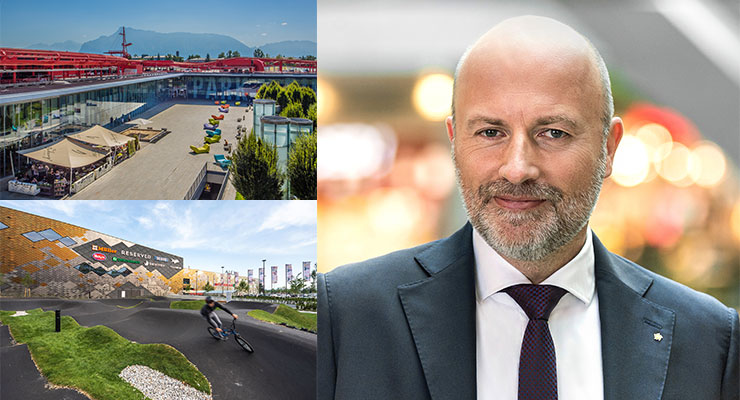ACROSS: HOW IS YOUR PERSONAL “LEVEL OF DEMAND” DEFINED?
CHRISTOPH ANDEXLINGER: The guiding principle that both SES and I adhere to is: We create vibrant living spaces that are highly relevant to our customers. Consequently, we consider everything from the customer’s perspective. Our customers are comprised of the visitors to our centers, the tenants, the neighborhoods and regional communities – and, of course, our owners. Vibrant places, in our estimation, essentially boil down to urbanity. We view urbanity as the opposite of monoculture.
ACROSS: WHAT EXACTLY DOES URBANITY MEAN?
ANDEXLINGER: A number of requirements have to be met in order for a location to be classified as “urban”. “Centrality”, in other words the creation of a place that is needed by as many people as possible within their respective living environments, is one such requirement. They must be places where people can meet, experience new things, and enjoy good food. The second urbanity criterion is “diversity”. A shopping mall, or destination as we prefer to say, must cater to a wide range of lifestyles, different behaviors and needs, as well as a variety of social groups. Other key factors include the creation of interaction opportunities for visitors, “accessibility” for all customer groups that is as low-threshold as possible, and “actual usability”, that is, the constant review of the actual benefit for and relevance to visitors. The ability to adapt, in other words, the ability to customize, is also essential. Retail will remain the undisputed cornerstone of our centers for a very, very long time. However, the spaces surrounding that core and their uses are changing. “Appropriation” closes the circle of key urbanity factors, which brings me back to the customer’s perspective. True urbanity is created when customers ultimately make a place their own, preferred, and ideally beloved place. Our job is to make that happen.
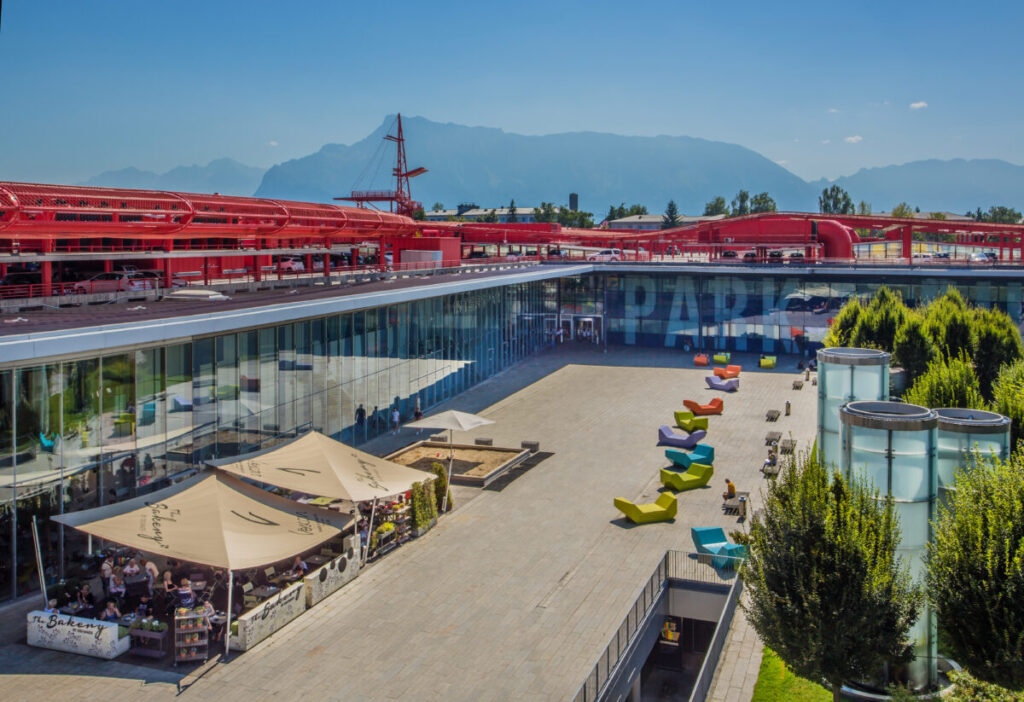
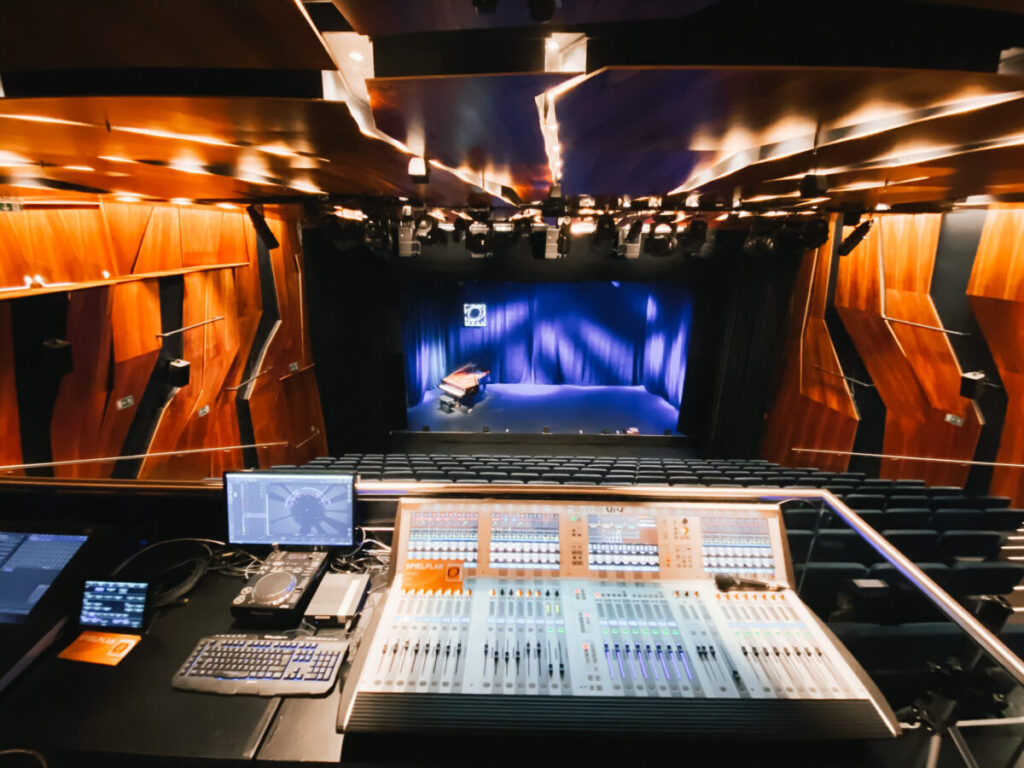
THE OVAL AT EUROPARK SALZBURG: The OVAL, which is integrated into EUROPARK Salzburg, is a cultural institution. Cabaret, small-scale art, concerts, cinema, plays, readings, and lectures are featured at the venue – always at the highest professional level. According to Andexlinger, the OVAL, which initially began as an experiment, has proven to be very successful over the years. People associate shopping with art and culture for all sorts of reasons; for many, a visit to the OVAL is an integral part of their shopping experience. Some visitors come for the culture, then go shopping afterward; others come for the shopping and subsequently find themselves motivated to attend a concert. The truth of the matter remains: The offer is low-threshold and easily accessible either way.
ACROSS: WHAT ARE SOME OF THE KEY EXPECTATIONS THAT CUSTOMERS, BUSINESS PARTNERS, AND OTHER STAKEHOLDERS HAVE OF A SHOPPING CENTER?
ANDEXLINGER: Our owners are more interested in sustainable success than quick money. At certain times, that also entails a willingness to invest heavily. Our retail partners expect high footfall and length of stay as well as a professional “support package”. A functioning, well-structured yet flexible on-site center and facility management team and system and, for example, a joint marketing plan are required in order to achieve that. More than anything else, customers want a good offer combined with suitable advice, in other words, an attractive mix of retail, service, gastronomy, health, education, and entertainment. In addition, a center should function as a meeting point and be easily accessible by all means of transport. From the customer’s point of view, considerations such as ambience, cleanliness, and security should not be neglected. Customers expect more than just innovation and flexibility from us – above all, they expect continuity.
ACROSS: WHAT DOES THAT MEAN?
ANDEXLINGER: In addition to new impulses, they want to feel a sense of reliability. More often than not, it is much more important to maintain the overall level or to gradually progress rather than just trying to deliver peak performance for a short time and then falling back into the “average” trap. Another key element of the SES concept is the fact that our locations are integral parts of society and social life in the respective catchment areas. SES centers are never self-contained microcosms – they are open to networking with their surroundings.
ACROSS: THE HUMAN FACTOR IS THE KEY DIFFERENTIATOR WHEN IT COMES TO HOW CONSUMERS PERCEIVE BRICK-ANDMORTAR RETAIL. RETAILERS, HOWEVER, ARE STRUGGLING TO FIND ENOUGH GOOD STAFF. WHAT CAN YOU DO TO IMPROVE THE ADVICE YOU PROVIDE IN COLLABORATION WITH YOUR RETAIL PARTNERS?
ANDEXLINGER: We support our partners in every possible way. We are well versed in how to properly and convincingly communicate a destination as a whole. We understand the ins and outs of efficient and effective center and facility management. We give our partners feedback – whether it is received from our visitors or based on our own experience. Of course, we also support them when it comes to their employees, for example, by offering shopping benefits, company childcare places, employee parking spaces, etc. Good retailers, however, are also well aware of what their employees need. What we need to emphasize and raise more awareness of together is how attractive working at a shopping center can actually be.
ACROSS: CAN YOU ELABORATE ON THAT?
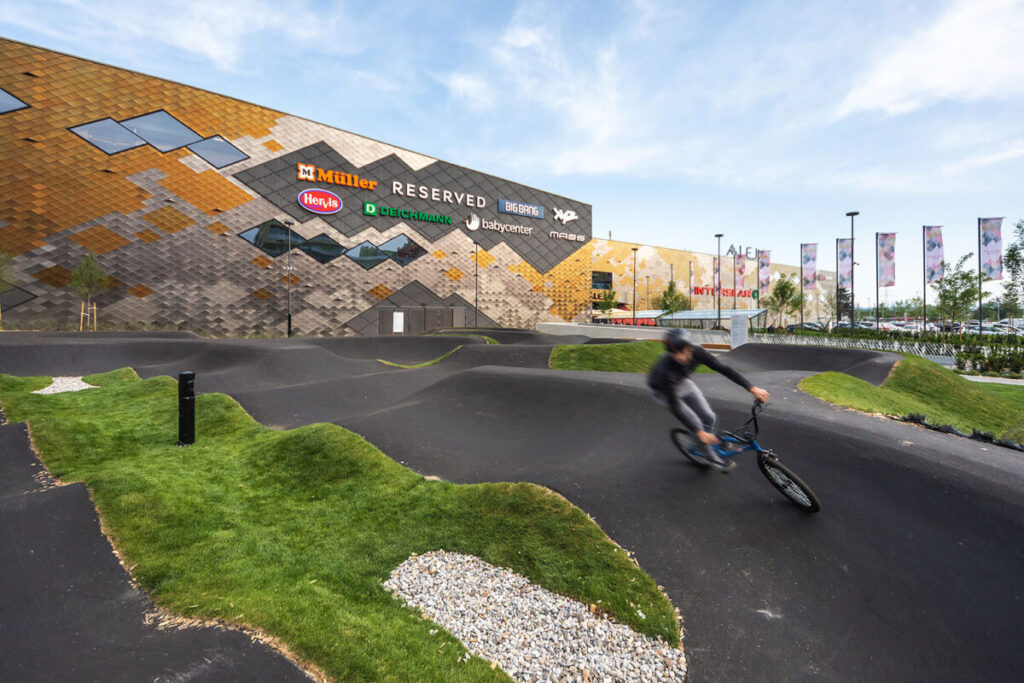
All SES locations are strategically networked within each city and are designed in an architecturally open manner. The Aleja pump track in Ljubljana, Slovenia, provides just one example. Even though it is part of the shopping center, it is freely accessible and integrated into the district, and is a popular meeting place for kids and young people.
ANDEXLINGER: Shopping centers have a great deal to offer employees. As I said before, they are easily accessible by car and public transport, and some of them have company childcare centers as well as other service facilities. Being able to do your personal shopping right at your workplace and having a large selection of restaurants to choose from for lunch every day are things that are often undervalued. Another advantage is that people can easily change jobs at such locations without having to relocate or restructure their personal lives. These are all important benefits that are communicated far too little. In the future, they should be emphasized to a greater extent with both retailers as well as the industry as a whole.
ACROSS: THROUGHOUT THE MARKET, SES IS KNOWN FOR ITS HIGH-QUALITY CENTERS AND OFFERS TAILORED TO THE RESPECTIVE REGIONS: HOW DO YOU ENSURE THAT THE OFFERS ARE SUITABLE FOR THE RESPECTIVE LOCATIONS, AND HOW HIGH IS THE DEGREE OF INDIVIDUALIZATION?
ANDEXLINGER: Theoretically positioning a destination and then putting that positioning into practice at all levels is a daily challenge. The SES system is based on standardized processes and clearly defined responsibilities. What is customized, however, are the characteristics along the individual process flows for each location. That begins with giving each destination its own unique name. Each location must individually cater to its catchment area and general conditions.
ACROSS: CAN YOU GIVE US AN EXAMPLE?
ANDEXLINGER: One example can be found on our homepages. The underlying software and the associated processes are the same for all centers. However, the centers themselves prioritize the content differently. By the same token, the local center management teams are responsible for the individual offers. They have to keep a close eye on what is in demand, what is desired, and what is expected locally. For example, what questions do customers ask at the customer information desks? What is being discussed on digital media platforms? Market observation is extremely important. Every two years, we conduct market research, which comprises a total of approximately 25,000 interviews. Why do we conduct so many? It’s because we survey people at every local center as well as by telephone in the respective catchment areas, which is not our only source of information, but it is an important one nonetheless.
ACROSS: WHAT IS BEING DONE AT THE CENTRAL LEVEL IN PARALLEL?
ANDEXLINGER: Our leasing managers have an overview of several locations and can make comparisons. We constantly monitor each region and are very open to new concepts that are presented to us. We also have our own quality management system, that is, a central office within the company with the sole task of checking every center on site through the “eyes of the customer” and questioning why things are the way they are – both the good and the bad.
ACROSS: DOESN’T THAT CAUSE A BIT OF UNREST AMONG CENTER MANAGEMENT?
ANDEXLINGER: Initially, that was the case here and there. However, the reports are non-judgmental and do not serve as a “monitoring tool” for us, but simply as a source of input and an incentive to take action. By the way, potential areas of improvement are not the only things that are noted – particularly positive points are noted as well. In many cases, there are good reasons behind why things are the way they are for the time being. Customers, however, are not interested in those reasons – and rightly so. All that matters is what’s right, and that is the only relevant criterion for us. There are often points of criticism that could easily be improved, but have not yet been addressed – the key phrase is “blind spot”.
ACROSS: HOW IMPORTANT ARE LOCAL OFFERS?
ANDEXLINGER: Regionality is an excellent tool when it comes to diversification and is, therefore, very important to us. The “aha” moment customers experience when they recognize something from their region is incredibly valuable. However, quality is a major factor here, both in traditional retail as well as in gastronomy. At the same time, we require concepts that are present at nearly every location and that attract people. We have developed our own in-house exclusivity index for our locations – our so-called “EXI”. It shows the unique selling points in relation to the other high-footfall locations in the catchment areas. The whole thing is weighted according to the relevance of the respective sectors from the customer’s perspective – a complex construct, but one that ultimately helps us to gain clarity about our existing – or, conversely, not yet fully exploited – unique selling points.
ACROSS: ON THE ONE HAND, THERE IS INDIVIDUALIZATION AND REGIONALIZATION, AND, ON THE OTHER HAND, MORE AND MORE VALUE FORMATS ARE OPENING UP IN LARGE AREAS. HOW DOES IT ALL WORK TOGETHER?
ANDEXLINGER: It’s similar to medicine: The dosage can make all the difference. Too much of a good thing can have a negative effect. The fact is that value formats have always existed. At the moment, they are attracting a little more attention because they are expanding more than others as customer demand is currently stronger than before. The key point is that the concept is different at each center, and it’s all about clear positioning. If a retailer claims to offer the lowest prices and keeps that promise, that position is a clear one and is something that a store can handle. Naturally, though: Relying exclusively on such concepts would be a dangerous development.
ACROSS: ARE YOU SAYING THAT THE SECTOR IS STILL FAR FROM BEING OVERWEIGHTED?
ANDEXLINGER: That’s absolutely correct. At the moment, other concepts are simply expanding less, making those that are expanding stand out. However, times are bound to change again and with them consumer behavior. I keep returning to the concept of continuity. Our clear objective is to gradually upgrade our malls to the next level. That doesn’t mean that we don’t incorporate the occasional value provider if the catchment area is suitable. In such a case, I would rather have that tenant at my center than somewhere else. Moreover: There are some things that are cheap, but highly attractive and well staged.
ACROSS: ACCORDING TO CRITICS, OVER THE YEARS, RETAILERS HAVE NEGLECTED TO GIVE CUSTOMERS GOOD REASONS TO VISIT SHOPPING CENTERS. WHY DO YOU THINK THAT IS THE CASE?
ANDEXLINGER: The product range should be the first priority – without a doubt. The preselection process is the most fundamental task of any retailer. That gives us a huge advantage over international online platforms, where customers are confronted by hundreds of products within the same category. In my opinion, product range definition, recognizability, and reliability are the most crucial factors. Customers know exactly what they can expect from retailers. The second point that should not be overlooked covers advice and interaction. The third deals with staging and emotionalization. People can actually touch, feel, and try out goods. On top of that, speed plays a key role: There is nowhere I can get a product faster than at a brick-and-mortar retail store. More importantly: People want to visit places where there are other people. Retailers have numerous opportunities to more effectively position themselves as meeting places. We mustn’t forget that 80-90% of product purchases are still made in-store these days.
ACROSS: CONVERSELY, DOES THAT MEAN THAT ANYONE WHO FAILS TO MEET THOSE REQUIREMENTS IS IN DANGER OF DISAPPEARING FROM THE RETAIL LANDSCAPE?
ANDEXLINGER: Brick-and-mortar retail is undergoing a radical change. In the future, there will be fewer places where people can shop and eat. The focus will shift to high-quality places and, above all, to places that people have made their own – for whatever reason. Our footfall is increasing. That has to be the case! We will have to generate more footfall than we did before the pandemic, because there will be fewer places featuring brick-and-mortar retail in the future. Retail means change – that has remained and will always remain the same. There will also be the one or other change in use of space, and concepts will be introduced that weren’t present before. That’s the nature of our industry – and that’s a good thing.
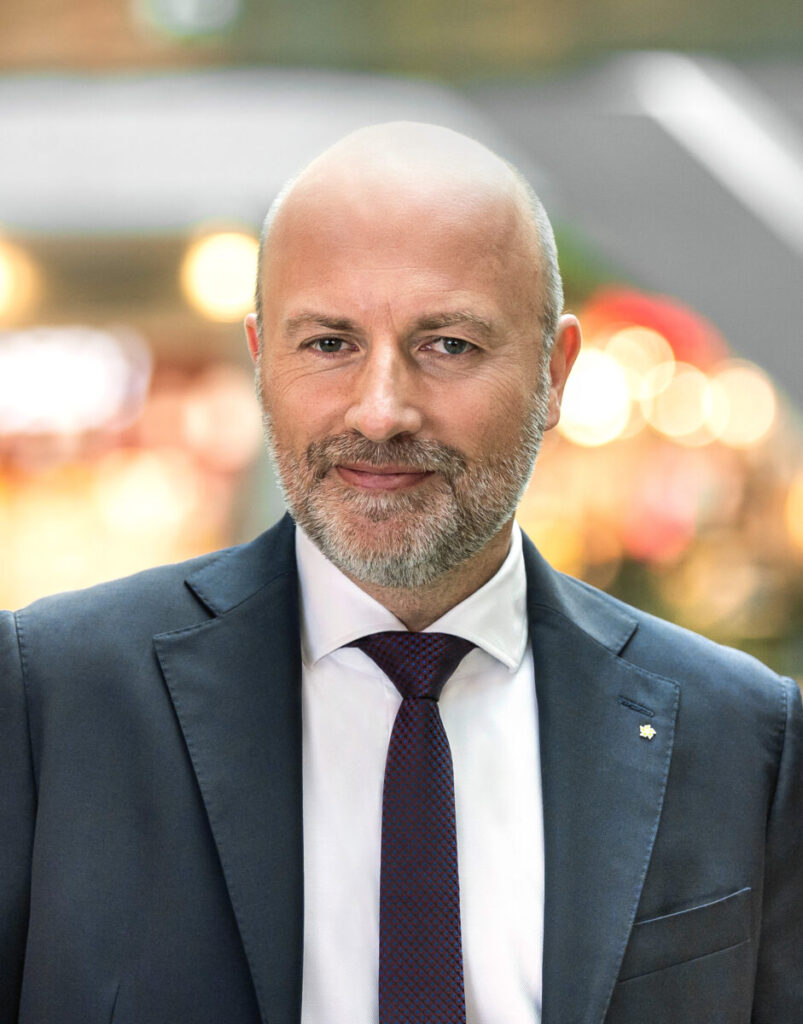
Christoph Andexlinger
Christoph Andexlinger is CEO of SES Spar European Shopping Centers

